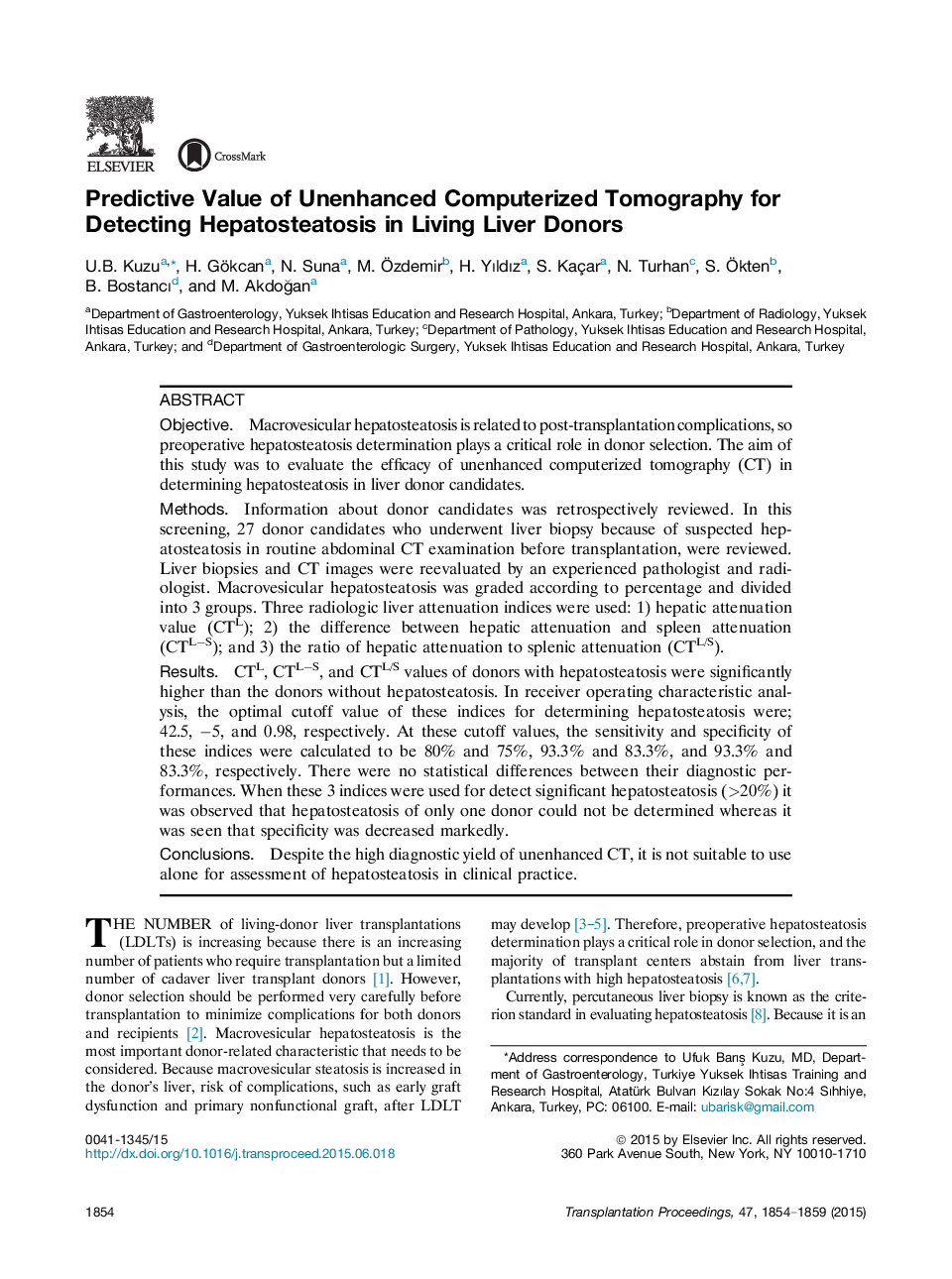| کد مقاله | کد نشریه | سال انتشار | مقاله انگلیسی | نسخه تمام متن |
|---|---|---|---|---|
| 6247214 | 1284514 | 2015 | 6 صفحه PDF | دانلود رایگان |
- CTL, CTLâS, and CTL/S values of donors with hepatosteatosis were significantly higher than the donors without hepatosteatosis.
- The sensitivity and specificity of these indices for detecting hepatosteatosis were calculated to be 80% and 75%, 93.3% and 83.3%, and 93.3% and 83.3%, respectively.
- Despite the high diagnostic yield of unenhanced CT, it is not suitable to use alone for assessment of hepatosteatosis in clinical practice.
ObjectiveMacrovesicular hepatosteatosis is related to post-transplantation complications, so preoperative hepatosteatosis determination plays a critical role in donor selection. The aim of this study was to evaluate the efficacy of unenhanced computerized tomography (CT) in determining hepatosteatosis in liver donor candidates.MethodsInformation about donor candidates was retrospectively reviewed. In this screening, 27 donor candidates who underwent liver biopsy because of suspected hepatosteatosis in routine abdominal CT examination before transplantation, were reviewed. Liver biopsies and CT images were reevaluated by an experienced pathologist and radiologist. Macrovesicular hepatosteatosis was graded according to percentage and divided into 3 groups. Three radiologic liver attenuation indices were used: 1) hepatic attenuation value (CTL); 2) the difference between hepatic attenuation and spleen attenuation (CTLâS); and 3) the ratio of hepatic attenuation to splenic attenuation (CTL/S).ResultsCTL, CTLâS, and CTL/S values of donors with hepatosteatosis were significantly higher than the donors without hepatosteatosis. In receiver operating characteristic analysis, the optimal cutoff value of these indices for determining hepatosteatosis were; 42.5, â5, and 0.98, respectively. At these cutoff values, the sensitivity and specificity of these indices were calculated to be 80% and 75%, 93.3% and 83.3%, and 93.3% and 83.3%, respectively. There were no statistical differences between their diagnostic performances. When these 3 indices were used for detect significant hepatosteatosis (>20%) it was observed that hepatosteatosis of only one donor could not be determined whereas it was seen that specificity was decreased markedly.ConclusionsDespite the high diagnostic yield of unenhanced CT, it is not suitable to use alone for assessment of hepatosteatosis in clinical practice.
Journal: Transplantation Proceedings - Volume 47, Issue 6, JulyâAugust 2015, Pages 1854-1859
